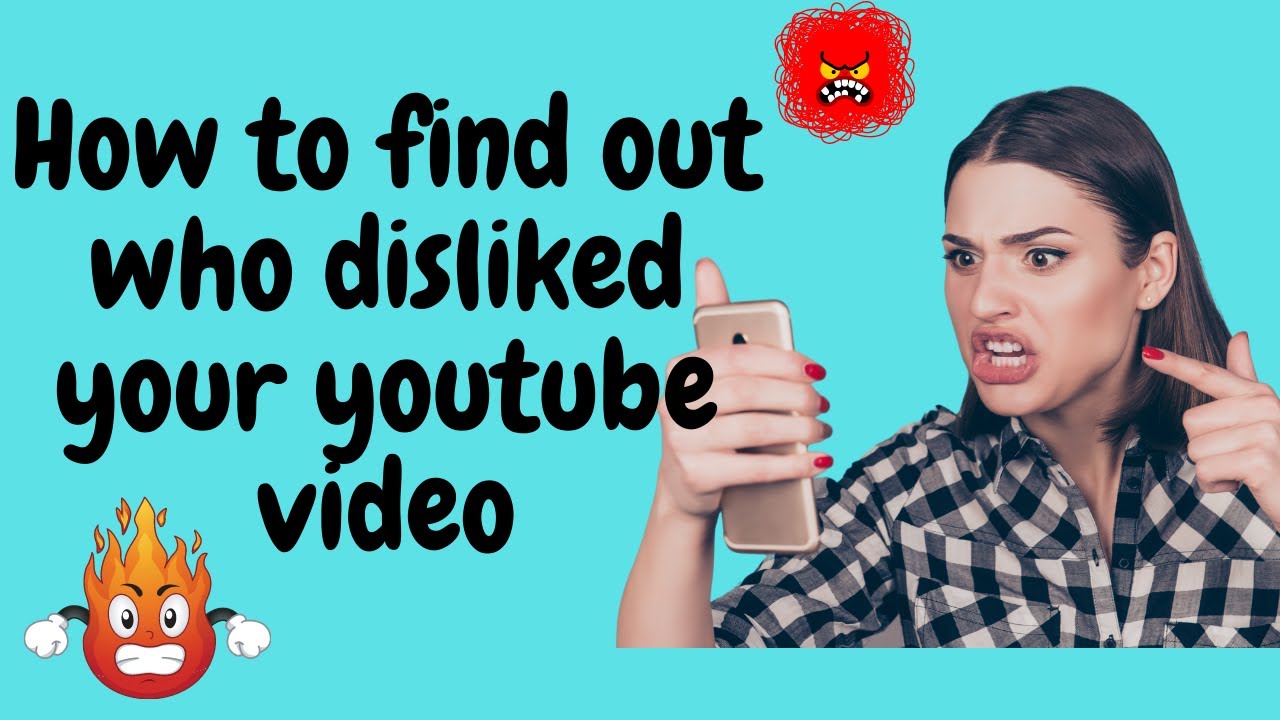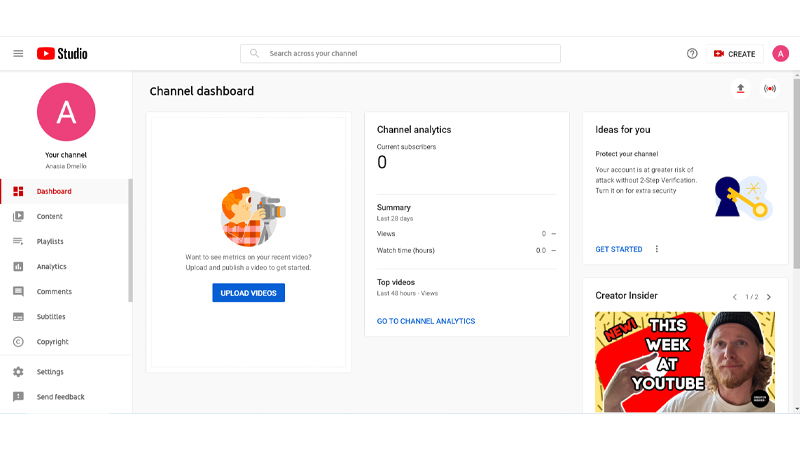In the vast sea of content on YouTube, creators are constantly seeking ways to engage with their audience. Viewer interactions, particularly in the form of likes and dislikes, play a crucial role in shaping the success of any video. But one burning question lingers in the minds of many creators: Can they see who disliked their videos? In this post, we’ll dive into the world of viewer interactions, specifically focusing on the dislike button and how it impacts content creators.
The Dislike Button on YouTube

The dislike button on YouTube is an interesting feature that serves as a form of feedback from viewers. Although it might seem straightforward, the dislike button holds more significance than many creators realize. So, what exactly is it?
When a viewer clicks the dislike button on a video, they are essentially indicating that they did not enjoy the content or that it did not meet their expectations. This interaction can be seen as a form of criticism, helping creators gauge the reception of their work. Here’s a breakdown of some of the key aspects of the dislike button:
- Feedback Mechanism: The dislike button allows viewers to express their discontent which can be invaluable for creators looking to improve their content.
- Influence on Visibility: While dislikes don’t directly affect the algorithm, a heavily disliked video may struggle with visibility, as engagement is often a factor that YouTube considers.
- Anonymity: One of the critical points about the dislike button is that it’s completely anonymous. Creators cannot see who disliked their videos, which means they can’t identify specific individuals or their motivations.
In recent years, YouTube has even experimented with hiding the dislike count visible to users, which further shifts the focus towards likes and comments as primary feedback tools. This decision has sparked a debate on whether it helps creators or diminishes constructive feedback.
Understanding the role of the dislike button is essential for creators. Instead of viewing dislikes negatively, they can be used to spark important discussions and motivate changes that align closer with viewer expectations. Ultimately, this feedback loop encourages growth and adaptation, essential ingredients for any successful channel.
Privacy Concerns and Viewer Anonymity

YouTube is a platform that thrives on viewer engagement, but it walks a fine line when it comes to privacy concerns. One of the key aspects of this dynamic is viewer anonymity. Unlike other social media platforms, YouTube does not disclose the identities of users who interact with videos, whether that be liking, disliking, or commenting. This raises a few important questions.
First, why does YouTube prioritize viewer anonymity? The answer lies in creating a safe space for users. By allowing viewers to express their opinions without the fear of public scrutiny, YouTube encourages open discussions and honest feedback. This is crucial, as it allows creators to receive constructive criticism and maintain a loyal viewer base.
However, this anonymity doesn't come without its downsides. Some creators feel frustrated as they can’t see who has disliked their videos. This lack of transparency can lead to misconceptions about the reasons behind negative feedback. Are the dislikes coming from trolls, or are they genuine critiques? Understanding the context behind viewer interactions can be challenging.
Furthermore, with increasing concerns over privacy in the digital age, users often appreciate the ability to engage without revealing their identities. This topic becomes even more nuanced with regulatory discussions regarding data protection. YouTube must balance the creator's need for feedback with the viewer's right to privacy.
In conclusion, while viewer anonymity is beneficial for open expression, it also presents challenges for creators keen on understanding their audience's sentiments. Addressing these privacy concerns is essential as the platform continues to evolve.
What Creators Can See About Viewer Engagement
For creators on YouTube, understanding viewer engagement is crucial to honing their craft and growing their audience effectively. Although they don't have access to specific user identities, they still possess valuable insights into how viewers are interacting with their content.
Here’s a breakdown of what creators can see:
| Engagement Metrics | Description |
|---|---|
| Likes and Dislikes | Creators can see the total number of likes and dislikes on their videos, providing a basic overview of viewer sentiment. |
| Comments | Creators can read and respond to comments, enabling direct interaction with their audience. |
| Watch Time | This metric indicates how long viewers are staying engaged with the video, shedding light on its quality and appeal. |
| Audience Retention | This percentage tells creators where viewers lose interest, helping them adjust content accordingly. |
| Traffic Sources | Creators can see where their viewers are coming from, allowing for targeted promotional strategies. |
While creators may not know who is disliking their videos, the actionable insights from these metrics can guide their strategies. By analyzing patterns in viewer behavior, creators can adapt their content to better align with audience preferences and ultimately foster a more engaged community.
In essence, even though they face limitations, there's a wealth of information that YouTube provides to help creators understand and enhance viewer interactions. This ongoing dialogue between creators and viewers is the heartbeat of the YouTube platform.
The Impact of Dislikes on Content and Creators
Dislikes on YouTube can feel like a punch to the gut for creators. They pour their heart and soul into crafting content, and seeing that little thumb-down icon can sting—especially when they can’t outright see who dished it out. But have you ever wondered how those dislikes really affect the creators and their content?
First off, dislikes can influence a video’s visibility on the platform. YouTube’s algorithm takes into account viewer feedback, and a high number of dislikes may lead to a drop in recommendations and views. If a video is getting more dislikes than likes, it might be shoved to the back of the line, impacting the creator's potential reach and engagement.
Moreover, the emotional impact on creators should not be underestimated. A creator might internalize dislikes, leading to feelings of inadequacy or discouragement. They might even change their content strategy, trying to appeal to a wider audience rather than sticking to their original vision. Here are a few points to consider:
- Content Strategy Changes: Creators may alter their content style based on viewer feedback, potentially losing their unique voice.
- Creator Morale: Dislikes can lead to negative feelings and burnout.
- Audience Engagement: A high dislike ratio might discourage interaction in the comments or sharing.
In essence, while dislikes provide feedback, they can also create a ripple effect that influences both a creator’s emotional well-being and their future content strategy.
Alternatives to Dislikes: Encouraging Positive Feedback
With the growing discussion around dislikes on YouTube, many are questioning whether there's a better way for creators to gauge viewer satisfaction. Instead of focusing on the negative, why not encourage positive engagement? Here are some alternatives to the traditional dislike button:
- Thumbs Up Only: Some platforms have considered eliminating the dislike button altogether to promote a more positive interaction environment.
- Comment Sections: Encouraging viewers to share their thoughts in the comments can provide more constructive feedback than a simple thumbs down.
- Polls and Surveys: Creators can directly ask their audience for feedback through polls, helping them understand what they enjoy or dislike about the content.
By shifting the focus to positive reinforcement, creators can foster a community that promotes helpful feedback rather than just negativity. This not only boosts creators’ morale but also can help them craft content that resonates more strongly with their audience's preferences.
Ultimately, it's all about building a community that values communication over criticism. So, the next time you feel the urge to dislike, think about offering feedback that helps creators grow instead. After all, creating content is a journey best traveled together!
Understanding Viewer Interactions on YouTube: Can Creators See Who Disliked Their Videos
YouTube is a powerful platform for content creators, and understanding viewer interactions can be crucial for improving the quality of the videos. The platform allows users to express their opinions through likes and dislikes, but many creators often wonder: can they see who disliked their videos?
According to YouTube's privacy policies, *content creators cannot see who has disliked their videos*. The platform maintains a level of anonymity for users, ensuring that personal data related to specific interactions is not disclosed. However, creators can see the total count of dislikes on their videos, which can help them gauge viewer satisfaction and engagement.
Here are some key points to consider regarding dislikes:
- Anonymous Feedback: Dislikes are completely anonymous; users are not required to reveal their identities when interacting with content.
- Impact on Metrics: While dislikes do contribute to a video's overall performance, they do not remove visibility from the platform.
- Content Improvement: Creators can use dislike metrics as a constructive tool to improve their content and better understand their audience's preferences.
- No User Data: Creators have no access to the data showing who interacted with their video.
| Viewer Interaction | Visibility for Creators |
|---|---|
| Likes | Total Count Only |
| Dislikes | Total Count Only |
In conclusion, while creators cannot see the identities of viewers who disliked their videos, the total dislike count can serve as valuable feedback. By analyzing this feedback, creators can continually enhance their content and better align with viewer expectations.
 admin
admin








